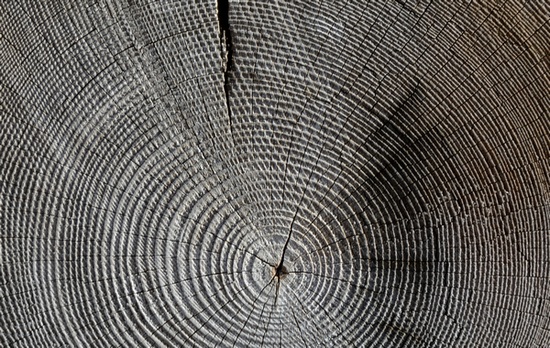
Climate change studies allow us to make predictions about the next stages of the current climate change crisis. But how do we know, for instance, what the humidity was a hundred, a thousand or a million years ago? This time, we asked Dr Anita Bokwa from the JU Institute of Geography and Spatial Management and Kamil Kopij, a regular collaborator of www.nauka.uj.edu.pl, to explain the science behind climate change studies.
1Question is a series of articles by the University Marketing science communication unit, in which specialists and experts from various fields briefly discuss interesting issues related to the world, civilisation, culture, biology, history, and many more.
Climatologists are sounding the alarm – we need to reduce global warming emissions and try to revert the damage we caused to our environment, and we need to start doing it right now. Regrettably, a large percentage of public opinion is in disagreement with the scientists. Critics say it’s impossible to be sure about climate in the past, and that climatologists are deliberately spreading misinformation to influence politics… or at least get more grant money. However, the concept of global warming, its causes and its effect, was, in fact, based on observations of natural climate cycles which have been happening for millions of years.
 The last 200–250 years is the least problematic period to reconstruct, since we possess extensive and detailed meteorological data from as early as 18th century. Still, if we want to know what happened before, we have to rely on proxy data.
The last 200–250 years is the least problematic period to reconstruct, since we possess extensive and detailed meteorological data from as early as 18th century. Still, if we want to know what happened before, we have to rely on proxy data.
Reconstructing climate of the past is based on interpreting a series of climatic data, e.g. air temperatures or precipitation. Such information needs to be processed first in order to gain knowledge about a certain period’s climate.
Dendrological research
By studying the breadth and density of wood grain, the dendrologists are able to approximate the average air temperatures of the last 1,000 years. This is because the annual growth of wood grain is based on environmental factors such as precipitation, air temperature, soil PH (i.e. its acidity or alkalinity), and CO2 concentration in the atmosphere. Some species of trees are particularly affected by the level air temperature during growing season – if it’s low, the grain will be narrow. Other types of trees are very sensitive to precipitation – they will produce narrow grain if rain is rare.
The effectiveness of this method was proven by comparing the results of dendroclimatological research with the results of direct temperature measurements conducted since the second half of the 19th century.
Coral research

Just like tree trunks, calcium deposits created by corals have layers of varying thickness, which is determined by several factors, including the temperature of the water in which the creatures live. By studying the deposits, scientists can provide a rough estimate of a certain period’s climate. Additionally, sometimes they can perform an analysis of oxygen isotope ratios in individual layers, which gives them information about the proportions of 18O and 16O oxygen isotopes. Why is this important? Because it is directly correlated to the temperature of water.
Deep sea core samples
Each year, billions of tonnes of dead plankton and other sea organisms, dust, and sediments make their way to the bottom of the ocean. This creates layers which have been forming constantly for several hundred million years. To get to this invaluable source of information about Earth’s history, scientists drill deep exploratory boreholes and collect core samples from places which are often located in the depths of the oceans. The longest core sample they’ve managed to extract is 2.1 kilometres long!
Similarly to coral research, most information is gathered through the analysis of oxygen isotope ratios. In this case, it is possible due to the fact that the bottom of the oceans is littered with calcium carbonate shells of miniature organisms, most notably Foraminifera. By studying them, we can tell the temperature of the water and reconstruct the climate. However, despite this method’s many advantages, it’s characterised by a very low temporal resolution, i.e. it only shows changes which happened over the course of millions of years. But the scientists have yet another, more precise technique: analysing ice cores.
Ice core samples

Apart from providing information about annual temperature differences, studying ice core samples allows scientists to more accurately research the chemical composition of the atmosphere. For instance, they can reasonably precisely determine the concentration of greenhouse gases, such as carbon dioxide and methane, which are key to climate reconstruction. Thanks to ice core analysis, we know about the climate changes that happened throughout the last 800,000 years. Ice in the ice caps forms many layers, which vary depending on the changing seasons. As with previous methods, oxygen isotope ratio analysis is also employed. Presently, the longest core samples ever taken are over 3 kilometres long.
***
The more data we gather, the closer our reconstructions are to the truth. The methods described above are crucial to learning more about the history of climate changes. They are supplemented with studies of lake and peat sediments as well as shells from the last several thousand years. Additionally, we can use various preserved historical documents to reconstruct the climate of the last one thousand years.
Photograph below the title: Artist’s rendition of a forest in the Carboniferous period. These forests disappeared around 305 million years ago. Climate change is one of the most probable causes, as the air became colder and drier. Author: JJ. Harrison, licence: CC BY-SA 3.0, via Wikimedia Commons.
Original text: www.nauka.uj.edu.pl





